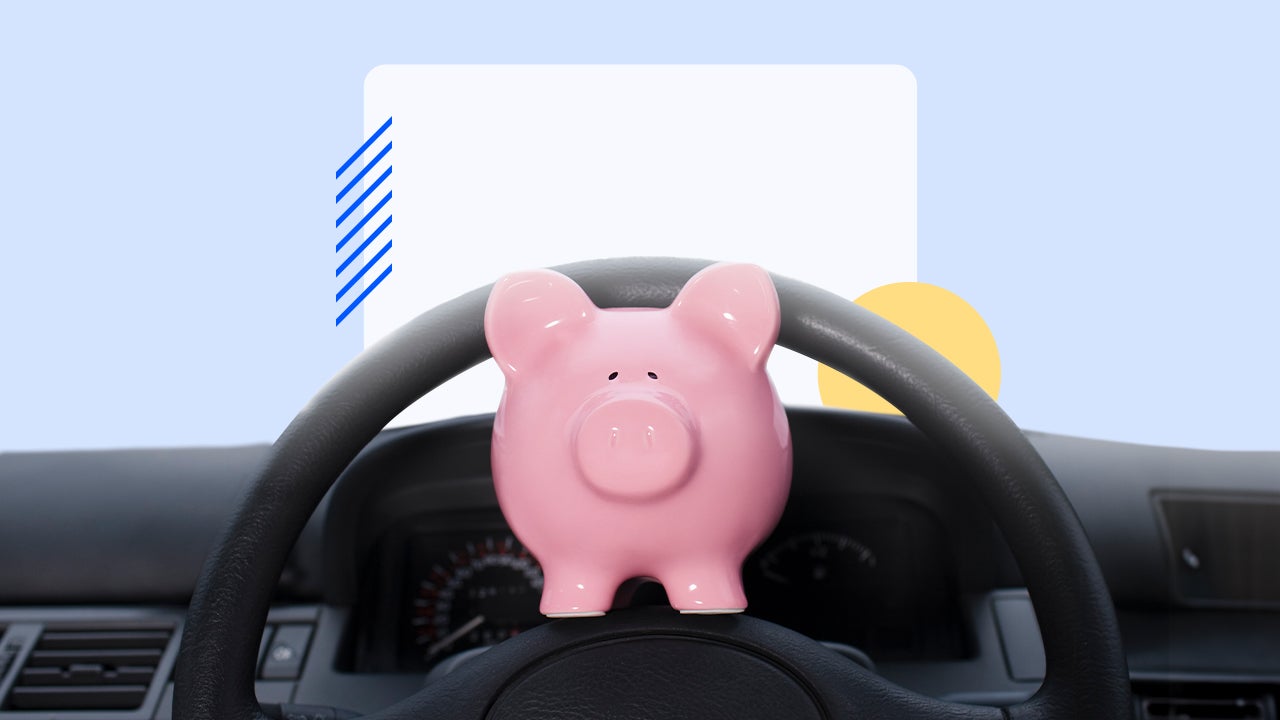18 ways to save money on a tight budget

Key takeaways
- Small changes like meal prepping and canceling unused subscriptions can save $100 to $300 monthly.
- Automating savings into a high-yield account ensures you make consistent progress, even on limited income.
- The 50/30/20 budgeting rule helps allocate income: 50% needs, 30% wants, 20% savings/debt repayment.
- Bank fees, subscription services and impulse purchases are common budget drains that can be eliminated.
Saving money on a tight budget requires strategic thinking and small, consistent changes that add up over time. According to Bankrate’s Annual Emergency Savings Report, 60 percent of Americans are uncomfortable with their emergency savings levels, with 68 percent citing inflation as the main barrier to saving more.
Finding ways to budget and save money seems harder every year for Americans, but there’s no “one size fits all” solution. In most cases, it takes dedicated effort and a combination of approaches. If you’re wondering how to save money, these 18 tips provide actionable strategies to trim costs and grow your savings, even on a limited income.
1. Start saving money with small changes
Being on a tight budget means every spending decision adds up, but you can start saving money by making small changes across various budget categories. For example, the money saved by making lunch instead of buying carryout or eating out can easily add up to $100 to $150 per month.
Some other impactful changes include turning lights off when not in use, canceling streaming services you rarely watch, using apps like GasBuddy to find cheaper gas prices, and implementing the 30-day savings rule for impulse purchases.
2. Keep a budget to track your progress
To take advantage of savings opportunities, you first need to understand where your money goes. Knowing how to budget money helps you plan spending and assess what money you have available to save.
Looking back at your previous month’s spending can help you decide how much you can budget for the next month in different categories. Making a budget can reveal areas where you didn’t realize you were spending significant money and help you catch recurring expenses for services you’re not using.
One way to budget is to use the 50/30/20 rule, which means allocating 50 percent of your income to essential expenses. The remaining half — known as discretionary income — goes to things you want (30 percent) and savings or debt repayment (20 percent).
Many people use budgeting apps to simplify spending tracking. Most budgeting apps have a free basic plan, so you can try them out before deciding on a paid monthly or annual version.
3. Take stock of food spending
Food can consume one of the largest portions of your budget, but preparing meals and coffee at home offers substantial savings potential. You can also refocus on smart grocery shopping strategies. Here are 18 ways to save on groceries.
Making a meal plan before shopping prevents spending money on food you don’t need. Use your phone’s calculator to track totals as you shop to stay within budget. Buying items in bulk, choosing generic brands over name brands, and joining your grocery store’s loyalty program are realistic ways to save money.
4. Use cash-back apps strategically
Cash-back apps help users save money by offering rewards for everyday purchases. Popular options include Ibotta for grocery cash back, Rakuten for online shopping rewards, Upside for gas savings, and Dosh for shopping and travel purchases.
While these apps won’t make you wealthy, they can add $20-50 monthly to your savings with minimal effort. Here are some of Bankrate’s picks for best cash-back apps.
5. Get a bank bonus for extra savings
Some banks offer bonuses for opening new accounts and meeting requirements like setting up direct deposit or maintaining minimum balances. The best bank bonus offers can provide $100-500 within a few months.
Read the fine print carefully before signing up. While some bonuses require modest deposits, others demand thousands of dollars or have fees that could reduce your bonus amount.
6. Avoid costly bank fees
Bank fees can quietly drain your balance. The average overdraft fee was $26.77 as of 2025, according to Bankrate’s Checking Account Survey, while out-of-network ATM usage cost $4.86 per transaction.
Keep your money from going toward unnecessary fees with these adjustments:
- Set up mobile bank alerts through your banking app to receive notifications when your balance is low or payments are scheduled, helping avoid unexpected overdraft fees.
- Stick to in-network ATMs or get cash back at grocery stores to avoid ATM fees. Alternatively, choose banks like Ally Bank that offer ATM fee reimbursement. (Here are seven other banks that reimburse ATM fees).
- Watch for other fees like monthly maintenance, money transfer, and minimum balance charges. Consider switching to a no-fee checking account, many available at online banks.
7. Earn interest on your checking account
Look for an interest checking account that doesn’t have minimum balance requirements or monthly service fees. For competitive yields, you might need to meet requirements like minimum direct deposits or a certain number of debit transactions.
8. Automate your savings for consistancy
Automating savings is the most effective way to build wealth on a tight budget.
“Trying to save when there is little or nothing consistently left over is challenging, so flip that around and do the saving first,” says Greg McBride, CFA, Bankrate’s chief financial analyst.
McBride recommends setting up a direct paycheck deposit into a high-yield savings account. “While saying ‘you won’t miss what you don’t see’ sounds cliché, it’s true,” says McBride. “Anybody I’ve ever counseled to do this that followed through came back and sang the praises of how well it works.”
9. Shop around for insurance rates
It’s smart to compare prices on auto and homeowners insurance every few years. Loyalty discounts may help you save by staying with your current company, but sometimes you’ll save more by switching or bundling auto and homeowners insurance with the same provider.
Double-check that you’re receiving all applicable discounts, such as those for multiple cars, safe driving or accident-free records.
10. Find cheaper ways to travel
Establish a travel budget ahead of time to avoid splurging. Save money on air travel by booking red-eye flights or using budget airlines. Consider budget hotels or Airbnb accommodations, buy groceries for some meals instead of eating out constantly and use a credit card that doesn’t charge foreign transaction fees.
11. Save on housing costs
Since housing expenses often represent the largest budget category, finding savings here can significantly impact your finances.
For renters: Try negotiating your rent or lease terms, especially if you rent from individual landlords or smaller property managers. “People who rent may not know it’s possible to negotiate their next lease,” says Malcolm Ethridge, CFP, Managing Partner at Capital Area Planning Group. Consider locking in longer leases for potentially better rates.
For homeowners: Refinancing your mortgage could save thousands over your loan’s life if you can reduce your interest rate by 0.5 percent or more. Use Bankrate’s mortgage refinance calculator to estimate potential savings.
12. Optimize your paycheck withholdings
Getting large tax refunds means you’re overpaying taxes throughout the year. That money could be better used to pay down high-interest debt, build an emergency fund or boost savings. Consider adjusting your withholdings if you regularly receive substantial tax refunds.
13. Use three-payday months strategically
For bi-weekly earners, two months per year include a third paycheck. Since you’re accustomed to living on two paychecks monthly, allocate some of the third paycheck toward paying off high-interest credit card debt and growing your emergency fund.
14. Take advantage of pre-tax savings options
Set up automatic contributions to employer-sponsored retirement plans like 401(k)s, which use pre-tax dollars and lower your taxable income. Many employers offer matching contributions, providing essentially free money for retirement savings.
“I think there are two things you must do to save while on a tight budget,” says Malik S. Lee, CFP, managing principal at Felton & Peel Wealth Management. “One, stay on budget and eliminate impulse purchases. Two, utilize pre-tax employee benefits. Saving to vehicles like 401(k)s and HSAs pre-tax allows you to hit savings goals while keeping more in your pocket.”
15. Reduce your energy bill
You can lower your utility bills by making a few energy-efficient changes. According to the U.S. Department of Energy, reducing your energy consumption with energy-efficient upgrades could save you $200 to $400 each year.
Switch to LED light bulbs (75 percent less energy than incandescent), unplug electronics when not in use, lower your thermostat by a few degrees in winter (potentially reducing heating costs by 10 percent) and seal air leaks around windows, doors and fireplaces.
16. Cancel unnecessary subscriptions
Streaming services alone cost U.S. households an average of $42 monthly. Take stock of your subscriptions and cancel what you don’t need. When possible, share accounts with family members or bundle services like Disney+, Hulu, and ESPN+ to save $15 monthly compared to separate subscriptions.
Consider using credit cards that offer entertainment rewards for subscriptions you keep.
17. Set up automatic bill payments
Late fees add up quickly. According to the Consumer Financial Protection Bureau, U.S. households spend over $14 billion annually on credit card late fees alone.
Setting up automatic payments helps avoid late fees and may qualify you for discounts. Student loan servicers often offer 0.25 percent interest rate reductions for autopay enrollment, while car insurance and utility companies may provide monthly discounts
18. Tackle your debts smartly
Paying off high-interest debt frees up more income for savings. According to a 2024 Bankrate Credit Card Debt Report, 36 percent of U.S. consumers have more credit card debt than emergency savings.
Consider using the snowball or avalanche method to pay down debts. If you have good credit, explore balance transfers to cards offering 0% introductory rates.
The bottom line
Learning how to save money on a tight budget requires making small changes that accumulate over time. Even minor adjustments to daily habits can significantly improve your financial situation.
Start by automating your savings into a high-yield savings account to ensure saving becomes a priority. User-friendly tools like budgeting and cash-back apps can help motivate you to stay on track as you begin seeing the financial rewards of your efforts.
Why we ask for feedback Your feedback helps us improve our content and services. It takes less than a minute to complete.
Your responses are anonymous and will only be used for improving our website.







